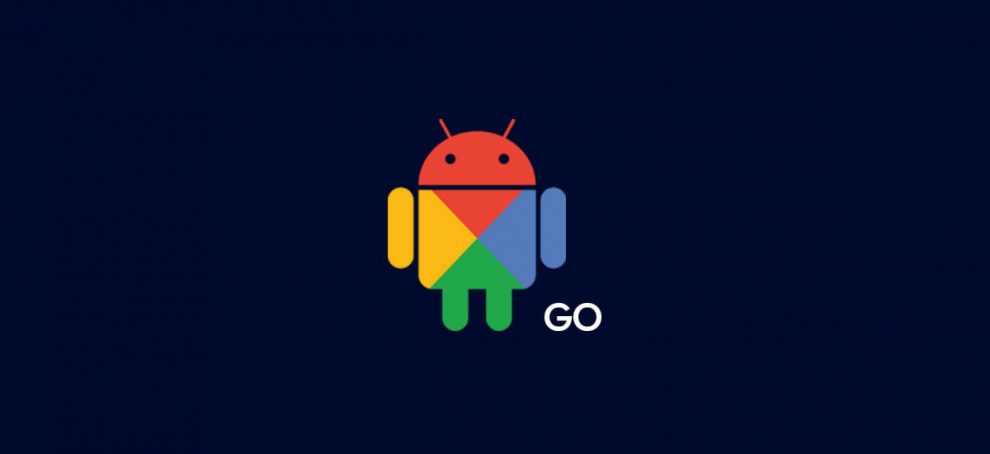Android (Go edition) is a lightweight OS, can be called a lighter version of the original Android OS. It features faster launch times, efficiency, saves space, saves data, is more powerful, has features to suggest, allows photo editing and offline search, plus it is very powerful with in-built security features.
Every time a new version of Android comes out, it is mostly a very big deal. In every new version, there are a bunch of new features, a set of design changes, and most of the times, a stream of phones to go along to suit the new version.
And when the launch is something as major as a slimmed down version of Android, the event is bound to make some noise.
Google, in I/O 2017 announced the launch of an OS that would run on low-cost smartphones that predominantly dominate the developing nations and it took a year for OEMs to launch their Android Go Devices.
Here are the Android Go devices – Alcatel 1X, Nokia 1, LavaZ50, ASUS Zenfone Live L1, and Huawei Y3 etc.
Android Go – The Idea Behind Android’s Slimmed Down Version
Let us start with the basic question first. What is Android Go?
Android Go is a slimmed down version of Android, which is designed specifically to run on the entry-level phones. The business strategy that runs behind Android Go is to expand the business to the developing nations, which on one hand has the advantage of the high user base, but on the other hand, face restriction from low storage space, high app size, and low RAM size.
To solve these three primal issues that keep Google from making Android reach its market potential, the brand launched Android Go that –
- Make the Android run on the phone with 1GB RAM or even less
- Make the OS takes lesser space
- Make the preinstalled apps take lesser data and space
Android Go Features- Save more data
- Compressed play store
- Run on smartphone with 1GB RAM and 512 RAM
In order to serve the developing nations to their best intent, the tech giant has brought about three major changes in its ecosystem – Operating System. Play Store. Apps.
Let us look at all three of the structural changes that Google has brought with Android Go, one at a time.
Operating System
The operating system of Android Go has been based on Oreo, but has been optimized for running on smartphones with over 512 MB to 1 GB RAM. Size wise, it takes half the space of Android Nougat, allowing devices with less storage a space to hold number of apps and media out of the box.
Devices that run Android Go are known to open the apps 15% faster than the other Android software. In addition to that, Android Go users get ‘data saver’ feature in default mode, which helps them consume lesser mobile data.
Apps
Like the new OS, Google has developed new apps as well to help make better use of the device’s memory. These apps require around 50% lesser space and tend to perform a lot better in the low end hardware.
Android Go devices come with these pre-installed apps –
- Google Assistant Go
- Google Go
- YouTube Go
- Gmail Go
- Google Maps Go
- Gboard Go
- Chrome
- Google Play Store
- Files Go
While these apps are a lot faster and smaller in size, they come with some features missing. Now although the Android Go apps are restricted in number, as of now, the number if expected to increase in the coming future.
Play Store
To help keep the lightweight experience in sync throughout, Google has launched an all now Play Store as well.
Android Go Play Store provides the same content as your regular Play Store, just with a storefront that is suited for the low-storage devices. The store has a featured section which recommends users the apps that are designed and developed specifically for their Android Go smartphones.
Differences in Android Go vs Regular Android
- Gmail Go
With Gmail Android Go Application, Google has cut back on graphics to a great extent. While visually, there are not a number of evident changes, performance wise, Gmail Go make use of a webview that makes the performance choppy.
- YouTube
As compared to the regular YouTube, YouTube Go is a lot simpler and has much less functionality. While UI wise, again, there is not a stark difference, but there are evidential changes in terms of functionality in case of YouTube Go – The amount of data a video will consume is clearly specified, there are no likes/dislikes and comments option anymore.
Google Android Go Application has a lot more to offer than your regular Google application. There are a number of customization options as well as the ‘Trending Search’ option, which was earlier missing in Google. The only thing missing in Google Go are the recommended cards.
As for the Assistant Go, while it is not completely different from Google Assistant, there are a few restrictions – there is no configuration option, the assistant doesn’t set default players, and it cannot control the hardware of the phone.
- Google Maps
The resemblance between Google Maps and Google Maps Android Go Application is uncanny, Maps Go is a case of perfect recreation when we talk about visuality.
Functionality wise, there are some obvious limitations, which might be a deal breaker for a number of users. The real-time turn-by-turn navigation is entirely missing in Google Maps Go, also reviews are missing in Google Maps Go.




Add Comment